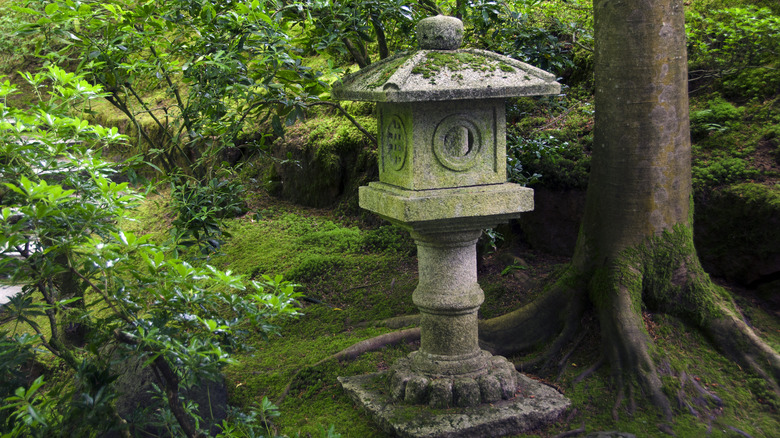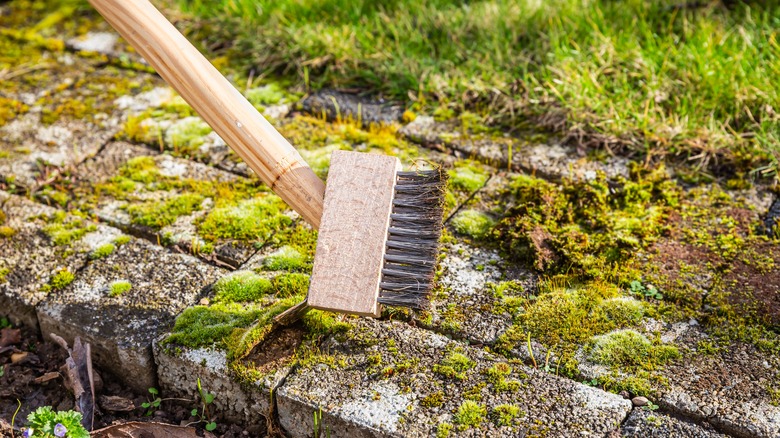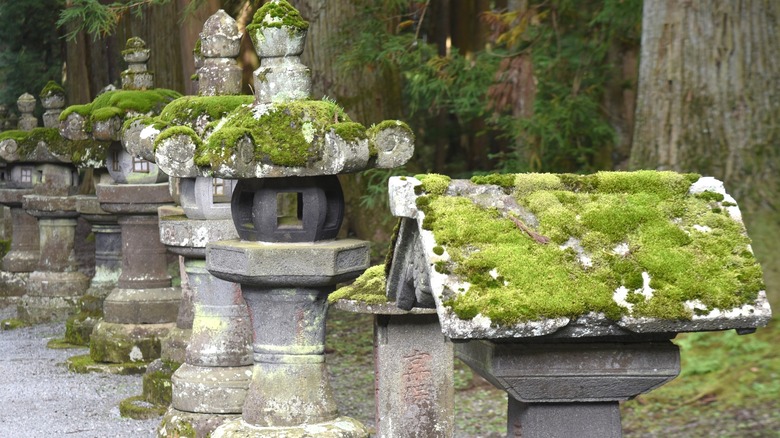Create Magical Moss-Covered Decor For Your Garden Using This Simple Ingredient
Moss can create a charming presence in the shade garden, adding brilliant color and soft texture in many ways. When moss strays beyond the ground or the base of trees to cover stones, logs, fences, or others objects, it ventures into a more mysterious territory. And when it starts to take over a stone statue or a brick walkway, the moss imparts a sort of magical, fairy tale quality to the garden. Yet this uniquely natural phenomenon of moss growth is actually easy to achieve on purpose, and using very a simple ingredient: yogurt.
I first saw this technique on a nature documentary many years ago, and the idea is now a fairly well-known recipe for garden art. Using two very simple ingredients, moss and plain yogurt (or buttermilk), you can create one-of-a-kind garden decor pieces that will keep their magical, mossy look for years. It's easy to do and it doesn't take very long before your mossy art is ready to display in the garden.
To start with, choose the objects you want to cover with moss. This technique works best on objects made of porous, natural materials, such as stone, wood, brick, or terracotta planters that can resist plant pests. The key is porosity, which refers to the density of the material and how well the moss will grow and cling to it. Older objects will generally have more porosity than, say, brand new terracotta pots. This is a great way to upcycle old gardening supplies and give them new life.
Gather moss and blend with yogurt
The next step for this project is to gather some moss that you will use to make the mixture. You can use all one type of moss, or you try mixing different ones together, or make multiple batches and apply to separate spots. Try to get moss from your own yard or a suitable place nearby so that it has a good chance of adapting to your local climate and conditions. Be sure to gather fresh, living moss and not dried or dead bits of moss. Your can remove bits of moss that's growing on your wooden deck to use also.
Next, place chopped pieces of fresh moss into a blender with some yogurt or buttermilk, and blend it until it forms a creamy "slurry" or thick liquid. You can add a bit of water if it's too thick. You should use a paintbrush to paint it onto the surface, but not too thickly (⅛-inch thick or less should be more than sufficient). I've found that a foam paint tool works for this also. The acidic conditions of the yogurt helps inhibit other bacteria and will allow moss to grow.
How you apply the moss slurry mixture may affect how quickly or thickly the moss grows. You may want to cover the entire object, or maybe start with sections of it (like the base of a statue instead of the whole thing). The results can be a bit unpredictable with this project, but that's part of the fun, and moss is easy enough to remove if it grows where you don't want it.
Keep moist, and wait
Most common backyard or forest mosses like plenty of shade and moisture, so it will be important to keep the surface moist after applying the moss slurry. Use a plant mister, and keep the object out of direct sunlight if possible, while you wait for the moss to grow. You may notice a bit of mold growing before moss appears. This is natural, as you may realize if you've ever let opened yogurt sit too long in your fridge.
The first moss growth should begin appearing within six weeks. Keep misting the surface and you should start seeing fuller growth. Timing and temperature may affect growth rate, and it may be slower or more stubborn if it's very hot or very cold. Also, moss takes some time to become attached to a surface, and may be vulnerable to wind or other weather disturbances later in the season, so try to schedule this project in late spring or early summer if possible.
Once your moss mixture has grown, you can find a suitable place in the garden. I love having moss-covered stone planters or statues in shady woodland areas, as it looks like they've lived there for many years. You can experiment with many looks: create a downright magical fairy garden with mossy statues and sculptures, or a classic old-school European style garden, or an eclectic cottage garden display, or even a regal, Japanese-style garden. This simple project offers a wide range of possibilities to suit any gardener's sense of creativity.


